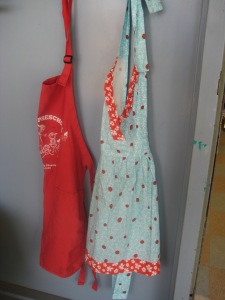
Great gardens start with really cute aprons!
Funny, one of our City Farmer fans had asked, “Does Phoenix even HAVE enough school gardens to make a tour?”
LOL, Yes! And this is Slow Food Phoenix’s first EVER school garden tour. We truly hope it’s the first of many, many to come. In fact there were so many gardens that we were only able to hit four of them that day. But we’re glad we did. Each and every garden was vital and precious, just like our kids. We soon learned that in every garden there is one person who is the chief inspiration for the garden and its gardeners. We dubbed them the “garden angels”. Every garden angel had a corps of committed garden shephards: teachers, retired teachers, volunteers and parents.

Exquisite student-painted murals of the "Climates of the World" line the corridors at Hidden Hills Elementary
Hidden Hills Elementary School
This school’s garden in north Phoenix was started in 1998 and has since been featured in Phoenix Magazine’s “Best Schools” issue. Strolling the campus inside and out, it is hard to believe that this is an elementary school. Really? This is an elementary school? It looks more like a museum of science and natural history…or a botanic garden. We were floored. Impressive “exhibits” include a desert tortoise habitat, wetland habitat, geometry garden, individual class gardens (i.e., each class grade had their own garden), and a butterfly garden. The garden angel for Hidden Hills is one Mrs. Farland who was not there on the day of the tour. No wonder: our guide gushed that Mrs. Farland was a tireless visionary who knew just where and how to seek grants, opportunities and enthusiastic community support. What’s so neat about the gardens here is that the program is integrated into the school’s curriculum so every student is involved from seed to harvest.
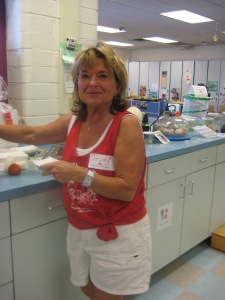
Beautiful Trudy is incubating live chicks for her kids
Chaparral Preschool
This school garden, part of Chaparral Elementary in northwest Phoenix, is a whopping 13 years old! The star and garden angel at Chaparral is Trudy, our amazing host and guide. Trudy gave us a goody bag of sunflower seeds (harvested at the school of course), instructions for a Kid’s Grass Caterpillar Project , a Pasta and Brocolli recipe (one of her kids’ favorites!) with instructions on “How To Have a Pea Party”, and a flower planting guide for Maricopa County. Trudy fed us fresh-picked snow peas and tender, sweet stems of brocolli while we toured her amazing classroom. We gleaned this gem from the tour map and – having met her – we simply KNOW that this is Trudy talking: “They sweat as they pull out the weeds, carry big bags of soil, turn dirt, plant the seeds and water every day. The weather cools and the plants grow… we pick, we taste, we beg for more. We are gardeners.”
It was heartbreaking to learn that dear teachers like Trudy may LOSE their funding next year. We were told this by another teacher in the same district – 9 schools will be affected in this district alone. We don’t mean that they will lose their garden funding – there is never any “garden funding” except what the teachers and communities bring in – we mean they stand to lose their JOBS and their preschools. We can’t even begin to imagine the loss this will be to the children and their families.

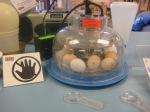

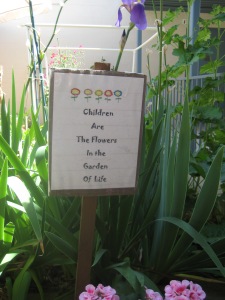
Flowers and inspirational messages grace the garden at Roadrunner
Roadrunner Elementary & Preschool
This well established school garden, just down the way from Chaparral, was filled with the scent of sweet pea and iris blossoms and they have made great use of vertical space. A beautiful mix of edible and ornamental plants towered above us, handmade mosaic tiles sparkled beneath us (each stepping stone tile was a parent-student project), and sweetly posted garden signs met us at every turn. It felt like Wonderland! This school is the very-deserving recipient of a Green Schoolhouse Series Safari Schoolhouse, a $1million gift! Teacher Peggy and her garden angels gave us packets of hand picked hollyhock seeds that were packaged in “Roadrunner School” private labels (created by the teacher), and a potted palo verde seedling that was donated to the school by a local private sponsor, also labeled with custom “Roadrunner School” tags. We think it clever marketing and we applaud the teachers and families at Roadrunner for their entrepreneurial skills. It can make the difference between an ordinary garden and one that engages the community and inspires participation and loyalty.
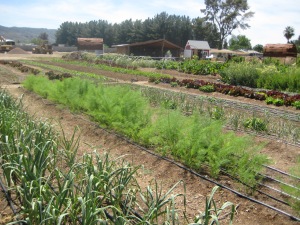
Desert Marigold has made the garden a focal point of the school
Desert Marigold School
Desert Marigold, a 10-acre oasis on the north slope of South Mountain in Phoenix, is a Waldorf Education school. Waldorf schools embrace the whole child: heart, hand and head. This is not your average school garden! It is, in reality, a production farm with a full-time professional gardener whose salary, we were informed, is a line item on the school’s budget. On the day we toured they had harvested carrots, radish, and chard, and were offering them for sale at their market table. The market table and welcoming angels were located in the very cool shade of an authentic, award winning adobe structure that was built by the school’s third graders and doubles as a stage and backstage for theatrical productions. There are goats, chickens, a pig, acres of fruits and vegetables and SPIRIT here at the foot of this mountain.
DMS is so unlike any K-9 garden we have ever seen, and it is likely the best we will ever see. It is THAT remarkable. From their school calendar:
One at a time, the children dip their hands and hold them up to be dried in a soft towel. Inside, a large wooden table is set with colorful cloth napkins. The children look for the painted rocks that spell out each of their names. A pot of soup sits beside a tray of hot rolls. Snack time! The teacher lights a candle. The children serve one another and eat quietly. Soon one child, then another asks, “May I please have more soup?” “Yes you may,” says the teacher.
“Look, my radishes are up! Are your radishes up?” says a third grader. “I don’t like radishes but I’m going to like these,” says her friend. A pick-up truck is parked near the garden, tailgate open, bed full of manure. A teacher passes out shovels to three eighth graders who begin unloading the truck. Another teacher looks around. “Now I need two more volunteers to help secure the fence in the barn. The goats keep finding a way out of their yard.” Hands fly up. In a moment a small group, equipped with water bottles, heads over to the barn with greens and scraps for the pig.

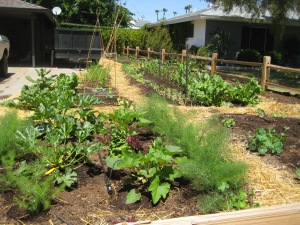








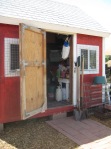
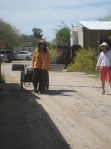

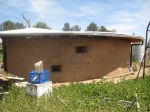
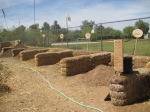
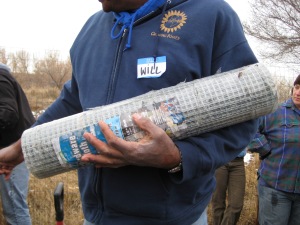

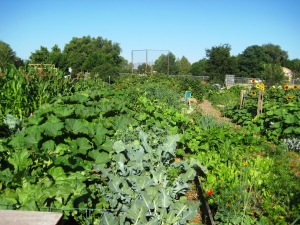


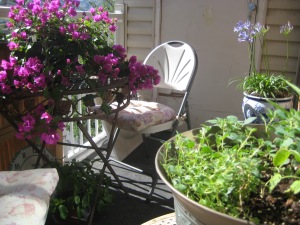
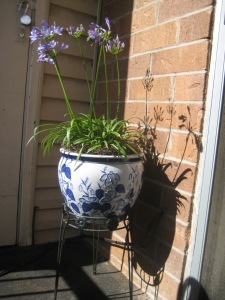
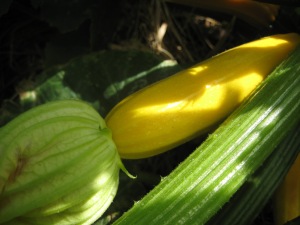 I was aghast to find that yellow summer squash is 98 cents per pound at the grocery store today. Yellow summer squash? Nothing could be easier to grow! If you have the tiniest plot of land – or even a patio or balcony – you could purchase a pack of seeds for about a dollar and, depending upon how much you sow, reap HUNDREDS of pounds of squash this summer. Most of that 98 cents for the store-bought squash goes to gasoline, trucking and middle men. Do we really want to encourage this?
I was aghast to find that yellow summer squash is 98 cents per pound at the grocery store today. Yellow summer squash? Nothing could be easier to grow! If you have the tiniest plot of land – or even a patio or balcony – you could purchase a pack of seeds for about a dollar and, depending upon how much you sow, reap HUNDREDS of pounds of squash this summer. Most of that 98 cents for the store-bought squash goes to gasoline, trucking and middle men. Do we really want to encourage this?
